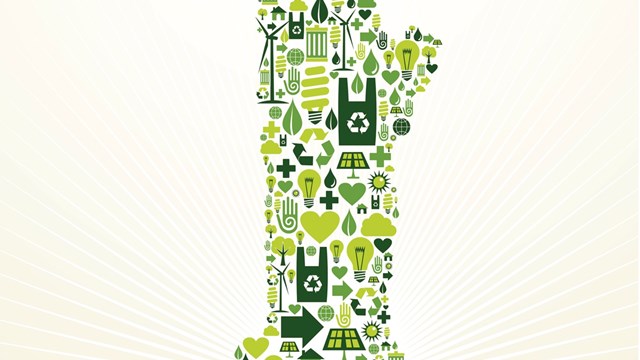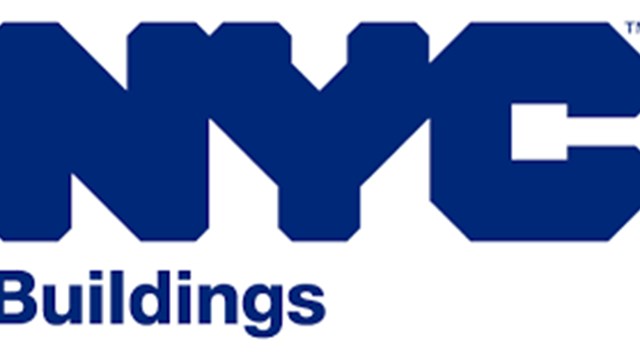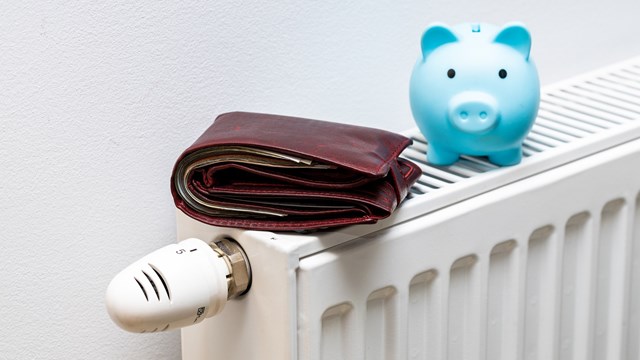
Seasonal spikes in the prices of fuel, oil and gas rising, higher costs of electricity, the need to bring those energy bills down—your condo or co-op will likely feel all of these, especially if it has older boilers, appliances, and so forth. Thankfully, there are strategies out there to help you conserve energy, and there are agencies and other organizations that are only too glad to help.
At one time, energy costs were so insignificant that they weren’t even factored into building expenses. Then came the energy crisis of the 1970s, with its skyrocketing prices, and people suddenly became aware of the necessity to control power costs.
Soon, manufacturers began making energy-saving lighting devices (such as compact fluorescents), energy-saving air conditioners and boilers, occupancy sensors that turned lights or air conditioners off depending on whether the room was occupied, better insulation that saved on heating costs, and more.
Utilities began incentive programs for residences and businesses that used them. This reporter worked for the trade magazine Energy User News (now Energy and Power Management) in the late 1980s and early 1990s, and put together charts with pages and pages of such programs sponsored by utilities across the country.
NYSERDA’s Programs
Today, in New York City, most, although not all, of these programs are sponsored by the New York State Energy Research and Development Authority (NYSERDA). Sometimes, building owners combine energy-saving strategies with “green,” or renewable-energy and non-polluting, strategies.
According to Colleen Ryan of NYSERDA, this state agency “offers co-ops and condos technical assistance to help identify energy-efficiency improvements, and NYSERDA also provides financial assistance to install/upgrade energy-efficient measures.” NYSERDA’s programs include.
The New York Energy $mart ResTech (Residential Technical Assistance) program, which connects highly qualified firms that then help multi-family buildings identify areas for energy efficiency and cost-saving improvements. ResTech is available to electric distribution customers of Con Edison and several other utilities within the state.
ResTech can include engineering and feasibility assistance on indoor/outdoor lighting, building envelopes, mechanical ventilation systems, heating/cooling distribution systems and more, as well as technical training and computer-aided building modeling. In addition, it provides information about the Tax Incentives Assistance Project, which is designed to give consumers information they need to make use of federal income tax incentives for energy-efficient projects.
For more information about all aspects of ResTech, log on to www.getenergysmart.com/BuildingOwners/TechnicalAssistance/overview.asp
NYSERDA also administers the Comprehensive Energy Management Program. This helps with submetering multifamily buildings, or metering each apartment individually, so tenants are only responsible for their own metered energy use. Nowadays, the program can install “smart meters,” where the apartment owner can remotely control energy user during peak times. For more information, log on to their website at: www.getenergysmart.com/WhereYouLive/Submetering/overview.asp.
Last, the Assisted Multifamily Program provides a range of incentives to owners of publicly assisted multifamily buildings to pay for energy improvements. Although, judging by its description, most of the eligible buildings would be rental buildings, some Mitchell Lama-type co-ops may be eligible. Visit www.getenergysmart.org/buildingowners/assistedmultifamily/overview.asp
Publicized heavily by NYSERDA, although not administered directly by the agency, is the well-known, federally sponsored Energy Star program, details of which can also be found on NYSERDA’s website, www.getenergysmart.com. Briefly speaking, air-conditioners, lighting fixtures, dishwashers, refrigerators that meet certain energy efficiency standards are given an “Energy Star” seal. While Energy Star appliances may cost more up-front, NYSERDA says they will cut appliance electricity use by 20 to 50 percent in your monthly bills.
Other Programs
KeySpan (formerly Brooklyn Union Gas) sponsors a program known as Green Cinderella, which promotes environmentally sound building design as well as energy efficiency. “Each condo and co-op has specific needs,” says Karen Young, a KeySpan spokeswoman. “KeySpan looks at the job site and customizes an energy package to meet their needs.”
One of the most visible results of the “Green Cinderella” program is the Nassau Brewery Ice House condo development, where a $75,000 grant from the utility helped transform an abandoned ice house into a six-unit condo loft development. Among its energy-efficient features is radiant heating, in which a heating system embedded into the floors radiates upward into the lower seven feet of the room, rather than the full 20 feet of the loft-like units.
In addition, for multi-family buildings in its service area, KeySpan Energy provides financing and rebates for purchase and installation of gas boilers.
Water conservation is also an important cost-saving measure for co-ops and condos. According to Warren Liebold, director of technical services and conservation for the city’s Department of Environmental Protection (DEP), the DEP offers free leak surveys to all residential properties. “We will survey all apartments and common areas, and prepare a written report for the managing agent or co-op board indicating where there are leaks (if there are any) and what would be saved by fixing them,” he says.
The report will also tell the board or management which units have water-saving toilets and showerheads, and how much would be saved by an upgrade. The DEP also host seminars on water conservation. To order a free survey, log on to www.nyc.gov/html/dep/html/meter.html#survey
Energy $mart Launched
NYSERDA launched Energy $mart in 1998 as a means of lowering utility bills—it superseded early programs sponsored by Con Ed, New York State Electric & Gas Corp. (NYSEG), Orange and Rockland and other utilities. (Con Edison and KeySpan Energy, formerly Brooklyn Union Gas, still do offer “energy-saving tips” for the general consumer on their web sites, such as using compact fluorescent lighting and clock thermostats, and putting shades and drapes on one’s windows. These can be found at the following websites: www.coned.com/customercentral/energysavingtips.asp and www.keyspanenergy.com/energy/save/smart_ny_kedny.jsp, respectively).
DEP has been operating its water-protection programs since the early ‘90s. KeySpan debuted Green Cinderella in 2003, but the program is descended from the earlier Cinderella program, which was aimed at upgrading and rehabilitating housing stock.
DEP says it has performed leak surveys on hundreds of thousands of apartments and private homes over the year. In addition tens of thousands of supers, board members property members and others have attended the water conservation seminars.
Savings vs. Money Up Front
As far as how much money is saved by NYSERDA programs, Ryan says the amount can vary from 20 percent annual energy savings to as much as 40 percent or more. “It really depends on which programs they use and how far the co-op board is willing to invest in energy efficiency improvements,” she says.
“NYSERDA does provide financial incentives, but rarely does [the program] cover 100 percent of the cost of energy-efficient measures,” says Ryan. “We encourage co-ops and condos to buy energy-efficient equipment by giving them the additional money that it costs to buy the premium, Energy Star, or energy-efficient measures.”
In general, all these programs are voluntary, although when it comes to water conservation, there are some city Water Board billing programs that require a water survey to qualify.
How to Get Involved
Now that you know about these programs, you might ask: How does a co-op or condo get involved? In general, the building’s management or board approaches NYSERDA (or the DEP, in the case of water conservation) with the idea of participating. “Usually, there is a board ‘champion’ who pushes for participation in NYSERDA programs,” says Ryan.
Buildings can find out more about NYSERDA’s energy incentive programs by calling 1-86-NYSERDA, or by visiting www.getenergysmart.org.
In most cases, there is no charge for taking part in these energy-saving programs. “The only initial cost,” says Ryan, “would be for the technical assistance, which is cost-shared by NYSERDA and reimbursed in some cases if the owners go through with the recommendations made by the technical assistance team.”
After the energy study or technical assistance study is done, a building has two years to act on the recommendations.
Building boards and managers interested in water conservation can log on to DEP’s web site at www.nyc.gov/dep. As for KeySpan, it can be reached at www.keyspan.com, although the company, as of this writing, is in the process of being acquired by a British firm, Nationalgrid.
In addition, the Association for Energy Affordability is also a good resource for New York City co-op and condo associations. They can be reached by logging on to www.aeanyc.org. Just this past June, the association held its “Multifamily Buildings 2006 Conference” at the New Yorker Hotel in Midtown Manhattan.
The conference consisted of more than 90 sessions and workshops that explored topics such as government initiatives and public benefit programs, property management challenges and opportunities, advanced building technology, training and renewables, energy-efficient new and gut rehabbed buildings, green and affordable multifamily buildings, healthy, durable and energy-efficient existing buildings, diagnosing and retrofitting existing buildings, monitoring and evaluating MFB programs and performance and health and safety issues.
AEA also conducts advanced technical training and certification for Multifamily Building Operators and Hydronic Heating System Designers. For further information about specific services and programs, contact them at 212-279-3902.
The Experience of One Co-op Development
Mark Zimmerman, outgoing president of Concord Village, a 1,023-unit Downtown Brooklyn co-op dating from the early 1950s, talked about his experience in the early 1990s with the submetering program then run by Con Ed.
The development’s buildings, Zimmerman explains, were constructed at different times. “The three original buildings were centrally metered, and the four that were built later had individual metering.” After a building-by-building vote, the three original buildings voted to stay with building-run central metering, while the other four buildings voted to go to the Con Ed-administered submetering program.
“My analysis,” says Zimmerman, “showed that we were not saving big money [by submetering], but to be fair, people who are paying their own electricity bills do control a bit more reduction in usage.”
At the same time, he says, the development decided to install another energy-saving measure—motion detectors on the stairs, which turn stairway lights on or off depending on whether they sense the presence of people in the area. He rates this as a successful energy-saving measure. Now, he said, the board is looking at solar panels on the roofs, which would help produce hot water for the development and bring down heating costs.
Zimmerman urges buildings involved thinking of submetering to “be very careful—if you have an old installation, when you switch over to the submetering service, some of the things that were implemented may not be compliant for the city code. It may be grandfathered now, but when you do something new, the city wants you to come up to code. We had to do $100,000 worth of work on the four buildings [that converted to the Con Ed submetering program].”
In the end, it’s all about making energy efficiency a way of life, and making sure you and your residents are fully aware of the benefits of saving energy. It’s not just about being environmentally conscious—it’s about saving money. And that sounds good at any time of year.
Raanan Geberer is a freelance writer living in New York City.









Leave a Comment